Inhaling dust often triggers a sneezing attack. It’s one way the lungs protect themselves against airborne particles. Most are of a size that triggers the body’s natural defense mechanisms but a proportion are small enough to lodge deep in the lungs. Once there they can cause serious respiratory diseases like “black lung” and asbestosis.
Government agencies monitor outdoor air quality for small particulates, but indoors it’s the responsibility of building managers and employers. Organizations should know what they’re exposing their employees, customers and even neighbors to, for health reasons, and sometimes also for process control. This White Paper from OMEGA Engineering explores the problems caused by microscopic particulate matter and how an organization might monitor it. Individual sections address:
Government agencies monitor outdoor air quality for small particulates, but indoors it’s the responsibility of building managers and employers. Organizations should know what they’re exposing their employees, customers and even neighbors to, for health reasons, and sometimes also for process control. This White Paper from OMEGA Engineering explores the problems caused by microscopic particulate matter and how an organization might monitor it. Individual sections address:
- Particulate matter air pollution
- Health risks associated with particulate pollution
- Sources of particulate matter pollution
- How to monitor and control particulate pollution
- Five environments that should be monitoring particulate pollution
- Handheld monitoring equipment
Particulate Matter Air Pollution

PM is classified by its aerodynamic diameter, which is not necessarily the same as actual size. The aerodynamic diameter of a particle is, “… the diameter of a unit density sphere that would have the identical settling velocity as the particle.” (Sizing particulates this way simplifies measurement).
Air pollution standards have historically been based on measurements of PM greater than 10 microns aerodynamic diameter (referred to as PM10). Monitoring sites would report the particles captured over a period of time in terms of micrograms per cubic meter (μg/m3). More recently concerns have grown over the impact of very fine particles on human health. In response, agencies now favor measurement down to 2.5 microns aerodynamic diameter. Accordingly, a newer particulate pollution meter will report in terms of PM2.5.
Health Risks Associated With Particulate Pollution
The lungs exchange oxygen with the blood. This happens in the alveoli which appear similar to bunches of grapes (but far smaller) at the ends of the bronchial branches. Capillary veins in the alveoli walls let oxygen move into the blood and return carbon dioxide.
Inhaling draws air into the lungs, and along with it airborne particulates. Larger particles are filtered out in the nose with progressively smaller particles being trapped deeper down. Mechanisms such as mucus, cilia (tiny hairs) and special cells called macrophages all work to capture particulates.
When PM gets into the lungs it has effects ranging from the relatively minor, like coughing, to asthma attacks, reduced lung function, and potentially fatal problems like pneumoconiosis. Health problems occur mostly with the very small PM. When it’s of the order of 2.5 microns it can lodge in the alveoli where the body reacts in a way that causes permanent damage.
Inhaling draws air into the lungs, and along with it airborne particulates. Larger particles are filtered out in the nose with progressively smaller particles being trapped deeper down. Mechanisms such as mucus, cilia (tiny hairs) and special cells called macrophages all work to capture particulates.
When PM gets into the lungs it has effects ranging from the relatively minor, like coughing, to asthma attacks, reduced lung function, and potentially fatal problems like pneumoconiosis. Health problems occur mostly with the very small PM. When it’s of the order of 2.5 microns it can lodge in the alveoli where the body reacts in a way that causes permanent damage.
Sources of Particulate Matter Pollution

Particulate Pollution Monitoring
Overall levels of outdoor air quality are monitored through a network of permanent stations. Businesses often use similar equipment to monitor the levels of PM being emitted through stacks.
Indoor air quality is the responsibility of building owners, managers and employers. While permanent monitoring is feasible, sampling studies may be more cost-effective. These could be performed on a fixed schedule, perhaps as part of a process of risk assessment, or on an ad hoc basis when particular processes are operating. The results of such a survey would help determine what type of PPE should be issued to employees.
Some processes, such as paint spraying or other coating applications, need to be performed in very clean conditions. Periodic checks with a hand-held monitor could be a way of verifying that filters are performing effectively (perhaps coupled with a handheld anemometer to check airflow).
Indoor air quality is the responsibility of building owners, managers and employers. While permanent monitoring is feasible, sampling studies may be more cost-effective. These could be performed on a fixed schedule, perhaps as part of a process of risk assessment, or on an ad hoc basis when particular processes are operating. The results of such a survey would help determine what type of PPE should be issued to employees.
Some processes, such as paint spraying or other coating applications, need to be performed in very clean conditions. Periodic checks with a hand-held monitor could be a way of verifying that filters are performing effectively (perhaps coupled with a handheld anemometer to check airflow).
Five Environments that Should be Monitoring Particulate Pollution
This list excludes medical, pharmaceutical and semiconductors because of their need for extremely high levels of cleanliness, surpassing the capabilities of a handheld particulate pollution meter.
- Burning processes. Incinerators, diesel engines, (such as those used in large generator sets) foundries and welding can all expose workers, and possibly others outside the immediate work environs, to very small particles.
- Manufacturing operations, especially where cutting and spraying take place. Cutting fluids readily form aerosols when agitated by rotating tools or wheels. Grinding, deburring, sandblasting and sawing processes also generate dust with airborne PM of a range of sizes. Textile cutting can generate a lot of very small fibrous PM. Paint spraying is an obvious source but any liquid mixing, especially if performed without a lid or cover, can create liquid aerosols.
- Mines and quarries are places where cutting and grinding are performed on a large scale. Levels of airborne PM can be high, and depending on the nature of the materials, could carry other health hazards.
- Construction zones and landfill operations both generate dust. While these are outdoors, the problems can be too local or transient for permanent stations to detect. Frequent checks with a handheld pollution monitor will identify rising PM levels before they become hazardous for workers and those downwind.
- Agriculture. Animal dander, plus dust from plowing or tilling soil and driving over dirt roads, can all be a problem. Monitoring helps identify potential problems before they become health hazards.
Handheld Monitoring Equipment

Protecting Health
The microscopic particles in dust and smoke can be extremely hazardous to health. Anyone operating a business or organization where people could be exposed to particulate matter should consider setting in place a monitoring program. A handheld particulate pollution meter is an inexpensive means of protecting the health of employees, customers and neighbors.
 CLOSE
CLOSE


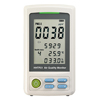
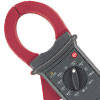
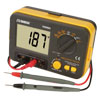
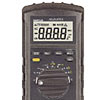
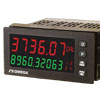
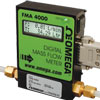
 Ultrapure or high purity water has been purified to tight specifications to...
Ultrapure or high purity water has been purified to tight specifications to...
 Ultrasonic flow meters are non-intrusive devices that use acoustic vibrations to measure the flow rate of liquid...
Ultrasonic flow meters are non-intrusive devices that use acoustic vibrations to measure the flow rate of liquid...
 Positive Displacement flow meters are the only flow measuring technology to directly measure the volume of fluid that passes though the flow meter
Positive Displacement flow meters are the only flow measuring technology to directly measure the volume of fluid that passes though the flow meter